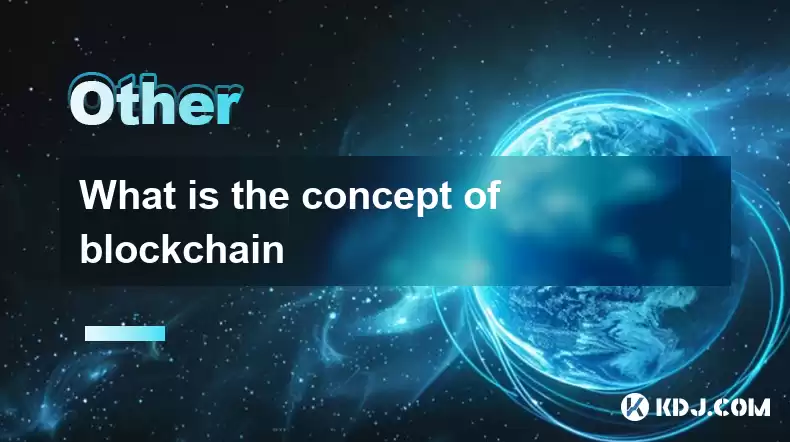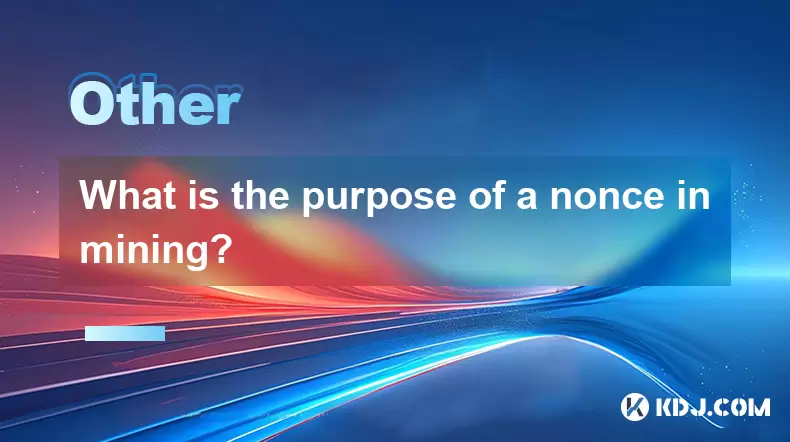-
 Bitcoin
Bitcoin $114400
0.68% -
 Ethereum
Ethereum $3550
2.48% -
 XRP
XRP $3.001
4.99% -
 Tether USDt
Tether USDt $0.9999
0.01% -
 BNB
BNB $757.6
1.46% -
 Solana
Solana $162.9
1.07% -
 USDC
USDC $0.9998
0.00% -
 TRON
TRON $0.3294
0.91% -
 Dogecoin
Dogecoin $0.2015
2.46% -
 Cardano
Cardano $0.7379
2.01% -
 Stellar
Stellar $0.4141
8.83% -
 Hyperliquid
Hyperliquid $37.83
-1.91% -
 Sui
Sui $3.454
0.76% -
 Chainlink
Chainlink $16.62
3.53% -
 Bitcoin Cash
Bitcoin Cash $554.6
2.84% -
 Hedera
Hedera $0.2486
3.91% -
 Ethena USDe
Ethena USDe $1.001
0.00% -
 Avalanche
Avalanche $21.95
3.34% -
 Toncoin
Toncoin $3.563
-2.85% -
 Litecoin
Litecoin $112.7
2.65% -
 UNUS SED LEO
UNUS SED LEO $8.977
0.13% -
 Shiba Inu
Shiba Inu $0.00001232
1.85% -
 Uniswap
Uniswap $9.319
2.93% -
 Polkadot
Polkadot $3.632
1.38% -
 Monero
Monero $307.2
2.36% -
 Dai
Dai $0.9997
-0.03% -
 Bitget Token
Bitget Token $4.340
0.91% -
 Pepe
Pepe $0.00001048
1.07% -
 Cronos
Cronos $0.1348
3.26% -
 Aave
Aave $261.5
1.93%
What is the concept of blockchain
Blockchain's immutability guarantees the authenticity of data, ensuring that once a transaction is recorded, it cannot be altered or removed, safeguarding the integrity of digital records.
Feb 03, 2025 at 11:00 pm

Key Points:
- Definition of Blockchain: A decentralized, distributed, and immutable digital ledger that records transactions securely and transparently.
Key Characteristics:
- Decentralized: Not controlled by a single entity, eliminating central points of failure.
- Distributed: Copies of the ledger are maintained by multiple nodes, ensuring data integrity.
- Immutable: Once data is added to the blockchain, it cannot be altered or deleted, guaranteeing tamper-proof records.
- Historical Development: The concept originated with Bitcoin in 2008, but has since expanded to various applications beyond cryptocurrencies.
In-Depth Explanation:
1. Decentralization: The Foundation of Blockchain
- Blockchain operates without a central authority or intermediary, eliminating potential censorship or manipulation.
- Transactions are processed and validated by a network of independent nodes, preventing any single entity from controlling the ledger.
- Decentralization enhances security, as malicious actors cannot target a single point of vulnerability.
2. Distribution: Ensuring Data Integrity
- The blockchain ledger exists across multiple nodes on the network, ensuring data redundancy.
- If one node fails, the other nodes continue to maintain and update the ledger, preserving data integrity.
- This distribution makes it extremely difficult for hackers to corrupt or tamper with the data since multiple nodes must be compromised simultaneously.
3. Immutability: Guaranteeing Tamper-Proof Records
- Once a transaction is added to the blockchain, it is cryptographically secured and linked to previous transactions.
- Any attempt to alter or delete a record would require modifying the entire chain of blocks, which is computationally infeasible.
- This immutability ensures the authenticity and trustworthiness of the data stored on the blockchain.
4. Consensus Mechanisms: Validating Transactions
- Consensus mechanisms, such as Proof-of-Work or Proof-of-Stake, determine how transactions are validated and added to the blockchain.
- These mechanisms ensure that all nodes on the network agree on the validity of transactions, maintaining the integrity of the ledger.
- Different blockchains may implement their own consensus mechanisms, leading to varying levels of security and efficiency.
5. Applications Beyond Cryptocurrency
- While blockchain technology originated with Bitcoin, it has now found applications in various sectors beyond cryptocurrency.
- From supply chain management to healthcare records, blockchain is transforming industries by providing secure, transparent, and efficient data management solutions.
- Its potential to revolutionize numerous areas is still being explored and realized.
FAQs:
Q1: What are the key benefits of blockchain technology?
A1: Blockchain offers numerous benefits, including decentralization, data integrity, immutability, security, and its ability to streamline processes and enhance trust in digital transactions.
Q2: How does a blockchain transaction work?
A2: A user initiates a transaction that is broadcast to a network of nodes. Nodes validate the transaction, add it to a block, and link it to the existing blockchain. The block is then broadcast to other nodes, which verify and add it to their copies of the ledger.
Q3: What is the difference between public and private blockchains?
A3: Public blockchains are open and accessible to anyone, while private blockchains are permissioned and controlled by a specific organization or group. Public blockchains offer greater transparency and decentralization, while private blockchains prioritize security and performance.
Q4: What is a cryptocurrency?
A4: A cryptocurrency is a digital or virtual currency that uses cryptography to secure and verify transactions. It operates on a blockchain network, enabling decentralized and secure transactions without the need for intermediaries.
Q5: What is the significance of blockchain in supply chain management?
A5: Blockchain can enhance supply chain management by providing real-time tracking, transparency, and increased efficiency. It can ensure the integrity of data, reduce errors, and facilitate collaboration among stakeholders in complex supply chains.
Disclaimer:info@kdj.com
The information provided is not trading advice. kdj.com does not assume any responsibility for any investments made based on the information provided in this article. Cryptocurrencies are highly volatile and it is highly recommended that you invest with caution after thorough research!
If you believe that the content used on this website infringes your copyright, please contact us immediately (info@kdj.com) and we will delete it promptly.
- Cryptocurrency, Altcoins, and Profit Potential: Navigating the Wild West
- 2025-08-04 14:50:11
- Blue Gold & Crypto: Investing Disruption in Precious Metals
- 2025-08-04 14:30:11
- Japan, Metaplanet, and Bitcoin Acquisition: A New Era of Corporate Treasury?
- 2025-08-04 14:30:11
- Coinbase's Buy Rating & Bitcoin's Bold Future: A Canaccord Genuity Perspective
- 2025-08-04 14:50:11
- Coinbase's Buy Rating Maintained by Rosenblatt Securities: A Deep Dive
- 2025-08-04 14:55:11
- Cryptos, Strategic Choices, High Returns: Navigating the Meme Coin Mania
- 2025-08-04 14:55:11
Related knowledge

What is the purpose of a nonce in mining?
Aug 04,2025 at 05:56pm
Understanding the Role of a Nonce in Cryptocurrency MiningIn the world of cryptocurrency mining, the term nonce stands for 'number used only once.' Th...

What is the difference between on-chain and off-chain transactions?
Aug 02,2025 at 04:22pm
Understanding On-Chain TransactionsOn-chain transactions refer to digital asset transfers that are recorded directly on a blockchain ledger. These tra...

How are blocks linked together?
Aug 04,2025 at 06:56am
Understanding the Structure of a BlockchainA blockchain is a decentralized digital ledger composed of a sequence of blocks, each containing a list of ...

What is a node's role in a blockchain network?
Aug 03,2025 at 03:16pm
Understanding the Function of a Node in a Blockchain NetworkA node is a fundamental component of any blockchain network, acting as a participant that ...

How are transactions verified on a blockchain?
Aug 04,2025 at 12:35am
Understanding the Role of Nodes in Transaction VerificationIn a blockchain network, nodes are fundamental components responsible for maintaining the i...

What is the double-spending problem and how does blockchain prevent it?
Aug 02,2025 at 01:07pm
Understanding the Double-Spending ProblemThe double-spending problem is a fundamental challenge in digital currency systems where the same digital tok...

What is the purpose of a nonce in mining?
Aug 04,2025 at 05:56pm
Understanding the Role of a Nonce in Cryptocurrency MiningIn the world of cryptocurrency mining, the term nonce stands for 'number used only once.' Th...

What is the difference between on-chain and off-chain transactions?
Aug 02,2025 at 04:22pm
Understanding On-Chain TransactionsOn-chain transactions refer to digital asset transfers that are recorded directly on a blockchain ledger. These tra...

How are blocks linked together?
Aug 04,2025 at 06:56am
Understanding the Structure of a BlockchainA blockchain is a decentralized digital ledger composed of a sequence of blocks, each containing a list of ...

What is a node's role in a blockchain network?
Aug 03,2025 at 03:16pm
Understanding the Function of a Node in a Blockchain NetworkA node is a fundamental component of any blockchain network, acting as a participant that ...

How are transactions verified on a blockchain?
Aug 04,2025 at 12:35am
Understanding the Role of Nodes in Transaction VerificationIn a blockchain network, nodes are fundamental components responsible for maintaining the i...

What is the double-spending problem and how does blockchain prevent it?
Aug 02,2025 at 01:07pm
Understanding the Double-Spending ProblemThe double-spending problem is a fundamental challenge in digital currency systems where the same digital tok...
See all articles

























































































